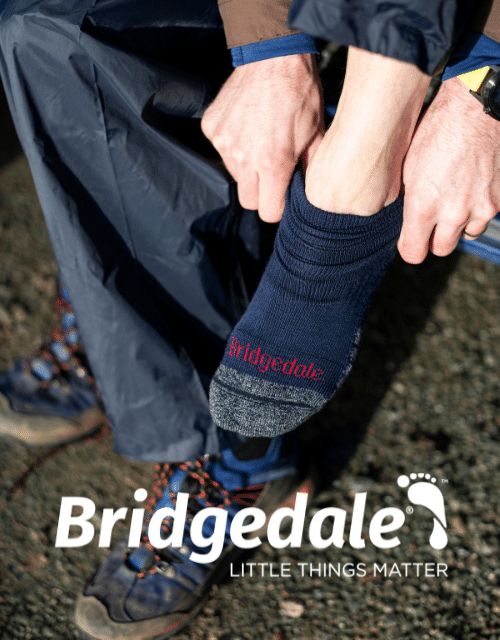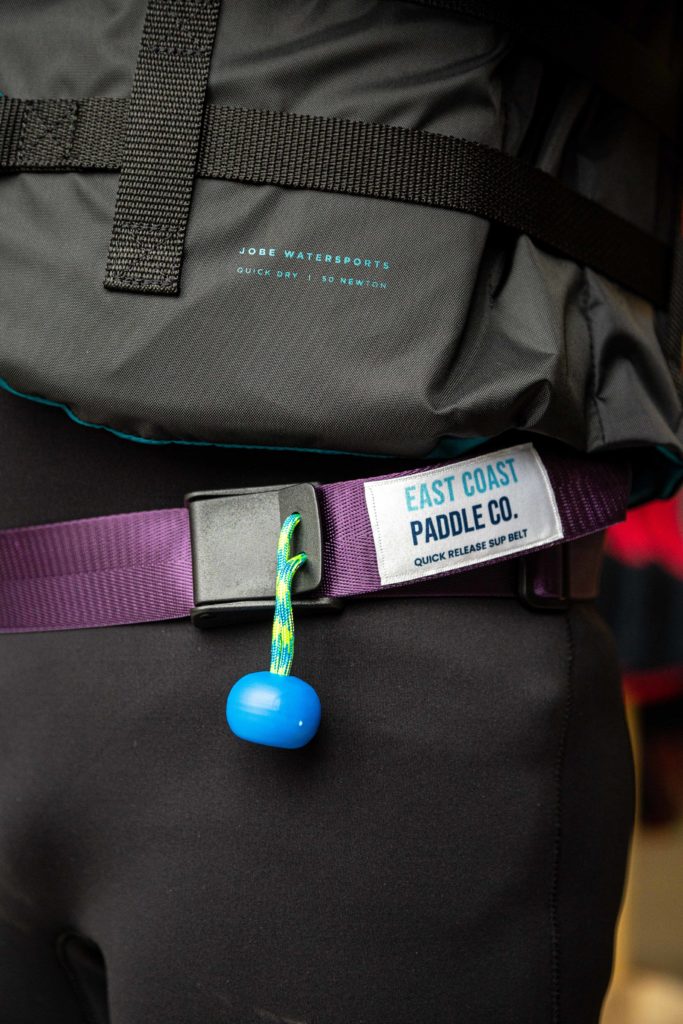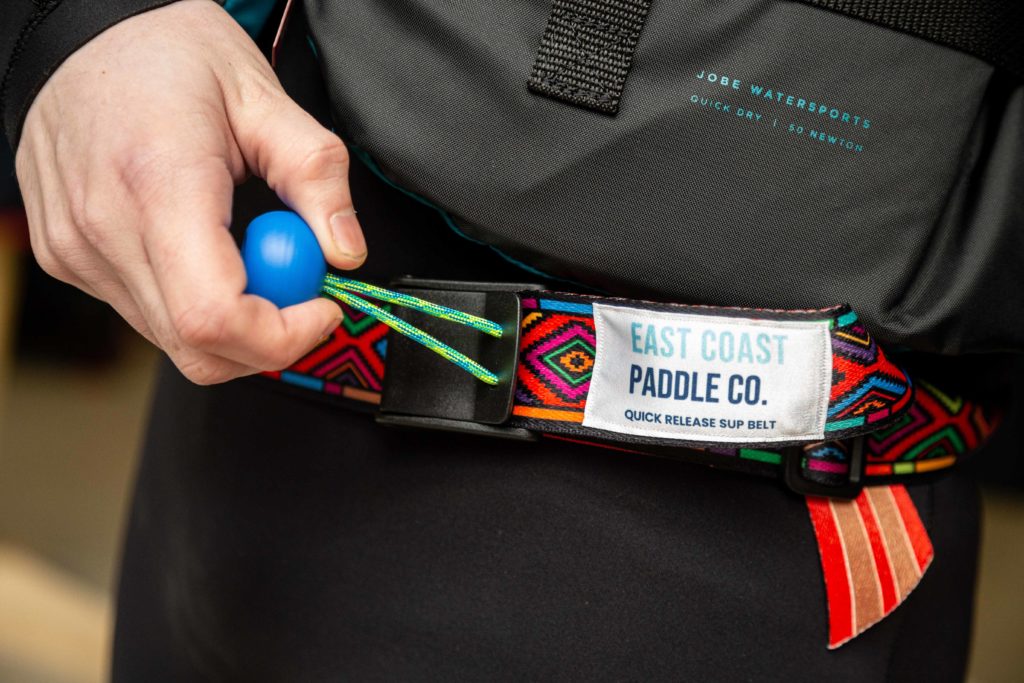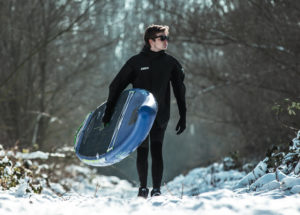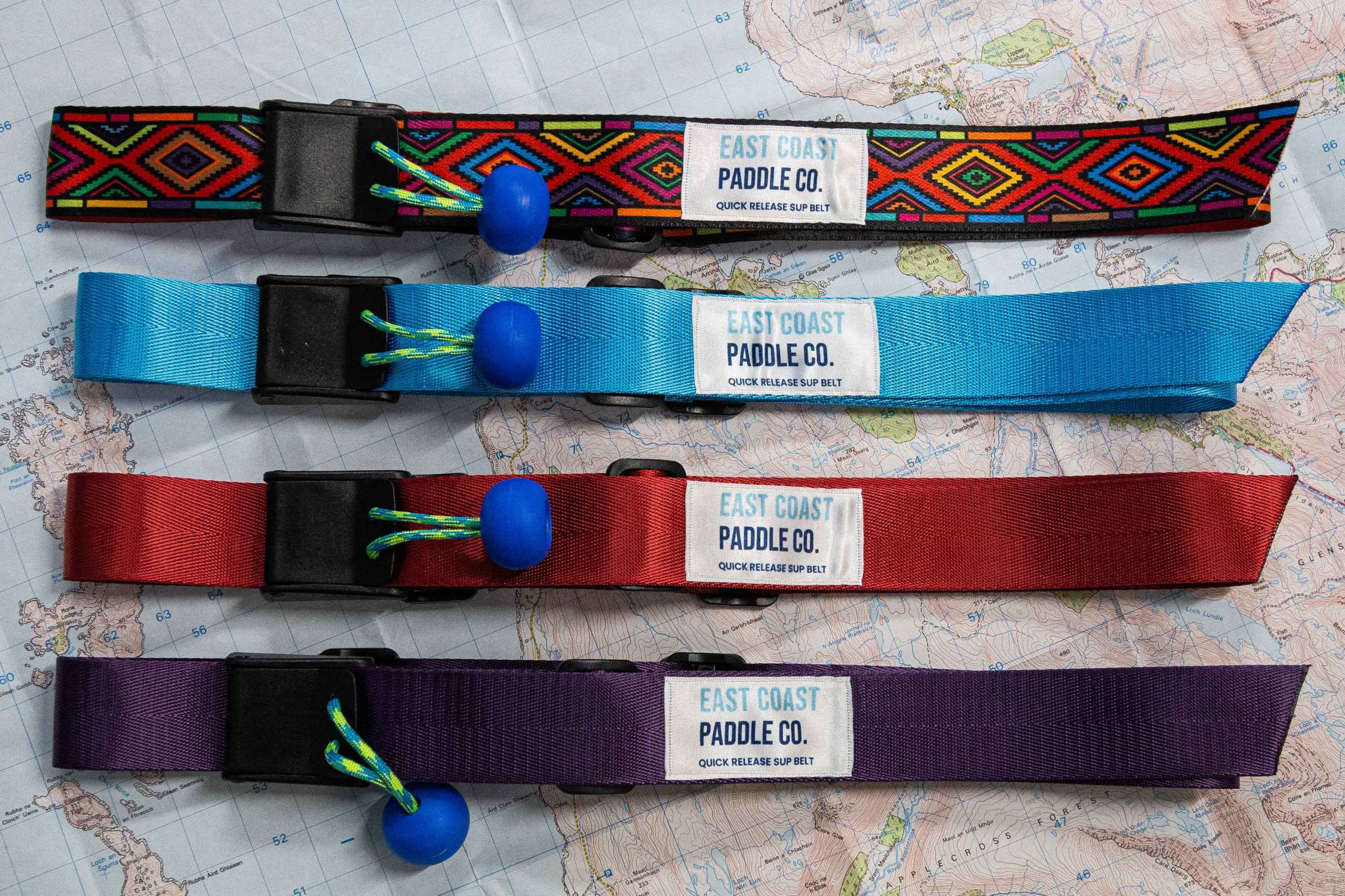
Facebook
Twitter
LinkedIn
SUP Waist Leashes – The Facts Behind the Frenzy
Waist leashes have been all the rage within SUP communities over winter, and for good reason.
As the first wave of SUP enthusiasts have moved from calm sheltered waters to more challenging expeditions, it is only reasonable that the kit they require changes too.
The waist leash – an attachment style designed for fast-moving bodies of water – provides a way to quickly and easily release one’s self from a board should you get into troubled water (pardon the pun).
Imagine this: you fall off your board in a flowing river. The current is pulling your board and your legs forward; meanwhile, you are fighting against that current to reach your ankle and detach from your SUP. This can result in you being pulled forward, and under, and there are of course series consequences to that.
Now, imagine the same scenario with a waist leash: You fall in and, regardless of how the current is flowing, you are able to reach a hand down to release your belt. This can reduce the amount of drag pulling you downward and instead allow you to swim to safety.
Just bare in mind that, with a waist leash, you should always be using a coiled SUP leash. Your straight leash should only be used in flat-water conditions or during surf. For more info on which leash to use in different conditions, check out this PDF from British Canoeing.
Types of Waist Leashes
There are two main types of waist leashes: those that you attach as a belt, which must usually be purchased separately; or using a quick-release belt with your existing leash. Choosing between the two is personal preference but, for now, our team are sticking with the latter, with a little help from East Coast Paddle Co.
These Scottish-made belts offer adaptability to suit each paddler, as well as a strong design to ensure you remain safe on the water!
To shop the full range of QR belts, simply click here!
You May also be interested in...
Paddling into Autumn | 5 Cold-Weather Paddling Tips
5 Cold-Weather Paddling Tips So, it’s that time of year again. Hillsides are turning golden, leaves are being cast off…
Paddling the Largs Coast - SUP Diaries
Paddling the Largs Coast – SUP Diaries There’s one thing we kept saying on the drive down to Largs. “God,…
Paddleboarding on Loch Ard - A Gentle Spring SUP
Paddleboarding on Loch Ard – A Gentle Spring SUP Sitting just a few kilometres west of Aberfoyle, and in the…
SUP Waist Leashes - The Facts Behind the Frenzy
Waist leashes have been all the rage within SUP communities over winter, and for good reason. As the first wave…
So, you got a SUP for Christmas...
If I said that I wasn’t jealous of you got getting a SUP from Santa, I would be lying through…
SUP Safety - The Best Advice Collated
In light of the recent tragic events in Wales, our team would like to step away from buying guides and…

